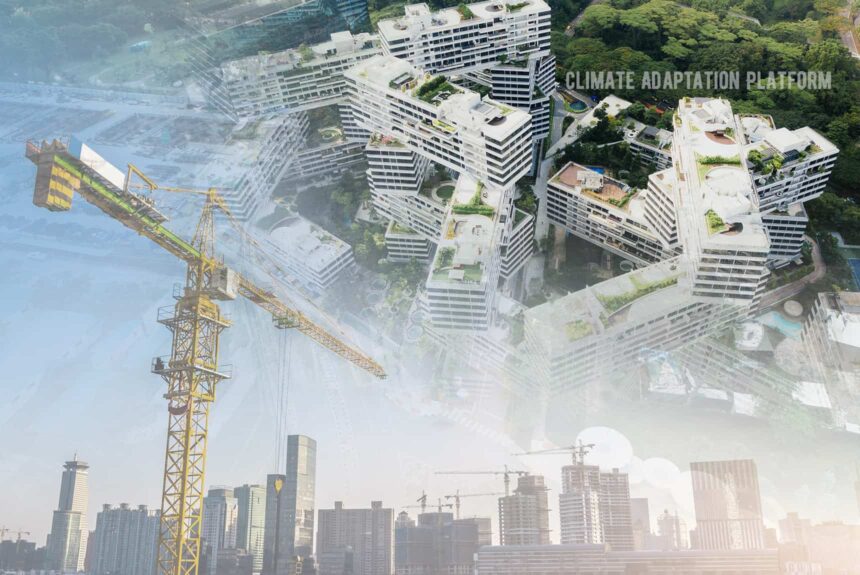Today’s pace of construction is adding floor space in major cities around the world equivalent to the size of New York City every month until 2060.
Despite the climate crisis and calls to reduce carbon emissions, major cities like Manhattan and London are experiencing a construction frenzy, demolishing old skyscrapers in favour of building supertall structures.
The Economist article, “The construction industry remains horribly climate-unfriendly”, notes that today’s building accounts for 40% of energy-related emissions, and homes are responsible for almost 20% of emissions.
Two types of emissions come from the building sector: embodied carbon, which accounts for around 10% emitted during the building process, from the construction materials like cement and steel, and maintenance and demolition.
The second source of emissions is from the operation of the building, such as the energy used to heat, calm, or light up the homes, offices, shopping malls, etc., which accounts for 27% of annual global carbon emissions.
According to the article, the carbon footprint from buildings is expected to double by 2050. Although emissions momentarily fell in 2020 from the record amounts in 2019 owing to the pandemic lockdowns, GHG emissions are set to increase by mid-century.
Efforts around the world to go green
Progress is slow even as policymakers and cities find solutions to make the construction and building industry more climate-friendly.
Across the EU, where nearly a third of ten buildings use fossil fuels for heating and cooling, officials want half of the building’s energy to come from renewable sources by 2030.
New York wants to decarbonise electricity by 2040, and Los Angeles aims for zero-emissions buildings by 2050. In England, new energy-efficiency building standards could make one in ten offices in central London obsolete by 2027.
Britain is tightening energy performance for new homes starting in 2025. Italy promised to cover green innovation costs and add 10% to incentivise the switch through tax deductions of up to €100,000 ($104,000) per home. More than €21bn has been given out to fund the scheme since its launching in July 2020.
As a result of building energy efficiency standards and efforts to meet the 2050 net-zero goals, emissions from households in America and European countries have reduced since 2015 but not enough to meet the annual emissions reduction required by the Paris Agreement because of the following obstacles:
First, the focus is limited to operational emissions but not on the embodied carbon emissions of the building.
The article notes that little progress has been made on monitoring and restricting embodied carbon. For instance, although Britain made a law requiring new houses to emit at least 75% less CO2 by 2025, there’s no law limiting the embodied carbon from constructing and demolishing them.
Exceptions exist, however. Since 2013, the Netherlands has required a whole-life carbon assessment for large buildings, and California sets carbon-intensity limits on some construction materials.
Second, renovation costs sometimes exceed the building’s value, and tax structures in wealthy countries incentivise demolition over reuse.
In Britain, for example, until March 2022, their new buildings are exempted from value-added tax, while renovation and repair are charged 20% of VAT.
The article surmises that this economic model is costly to the planet, as construction consumes most carbon-intensive materials like cement, steel, aluminium, and plastics and generates enormous amounts of waste.
Ways to reduce emissions
Innovations in the industry can help reduce emissions – such as making cement production much greener and using modular and factory-built structures, and homes can lower the amount of waste.
Almost half of the new houses in Finland, Norway, and Sweden are factory-built. However, the global pace of this transformation remains haphazard, which brings to the third obstacle – “the chronically underwhelming productivity of the construction sector as a whole”, which lags that of the broader economy, the article says.
Building method for new homes hasn’t changed in over a century, while the pandemic has worsened labour shortages in construction in the industry that was already struggling to produce enough tradespeople skilled in building sustainably.
China, Southeast Asia, and Africa will continue to experience a building explosion. The article notes that more than half of the buildings that will exist in 30 years have yet to be built, and if the world needs to meet the net zero emissions target, the industry must speed up its transformation.
Source:
The construction industry remains horribly climate-unfriendly. (2022 July 15). The Economist. Retrieved from https://www.economist.com/finance-and-economics/2022/06/15/the-construction-industry-remains-horribly-climate-unfriendly



Leave a Reply